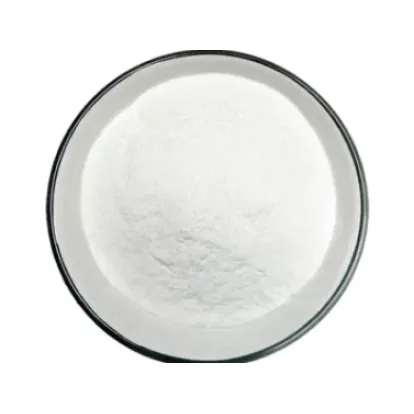FAQs | Everything You Need to Know About Inorganic Chemicals
Jul. 11, 2024
Inorganic chemicals are fundamental to numerous sectors, ranging from agriculture to industrial manufacturing. This guide provides answers to frequently asked questions, shedding light on the significance and various uses of inorganic chemicals as highlighted in expert resources.
What Are Inorganic Chemicals?
Inorganic chemicals are substances that usually lack carbon-hydrogen bonds. They encompass a broad spectrum of compounds, including metals, salts, acids, and bases. Unlike organic chemicals, which are primarily derived from living organisms, inorganic chemicals are predominantly sourced from minerals and other non-biological materials.

How Are Inorganic Chemicals Classified?
Inorganic chemicals can be categorized into several key groups:
Salts: Formed through the reaction of an acid with a base, common examples are sodium chloride (table salt) and potassium sulfate.
Oxides: These are compounds that combine one oxygen atom with another element. Familiar examples include water (H₂O) and iron oxide (rust).
Acids: These substances yield hydrogen ions (H⁺) in aqueous solutions. Notable examples are hydrofluoric acid and nitric acid.
Bases: Compounds that generate hydroxide ions (OH⁻) when dissolved in water, such as lithium hydroxide and calcium hydroxide.
What Are the Common Uses of Inorganic Chemicals?
Inorganic chemicals serve diverse functions across multiple industries:
Agriculture: Inorganic fertilizers, such as ammonium sulfate, significantly enhance crop productivity.
Manufacturing: Sulfuric acid is crucial for creating fertilizers, dyes, and plastics. Sodium hydroxide plays a vital role in the production of textiles and paper.
Construction: Calcium carbonate is a key ingredient in cement and lime for construction purposes.
Electronics: Silicon dioxide is indispensable in fabricating semiconductors and various electronic devices.
Healthcare: Inorganic substances like zinc oxide and silver nitrate are utilized for their medicinal properties, including sterilization and wound treatment.
Are Inorganic Chemicals Safe to Use?
The safety profile of inorganic chemicals varies based on their individual attributes and usage contexts. For example, table salt is generally regarded as safe, while substances like sodium cyanide are highly toxic. Adhering to safety protocols and donning the appropriate protective gear is essential when handling hazardous inorganic chemicals.
How Do Inorganic Chemicals Impact the Environment?
The environmental repercussions of inorganic chemicals can be both beneficial and detrimental:
Positive Effects: Inorganic fertilizers promote agricultural efficiency, which is crucial for achieving global food security. Chemical agents for water purification, such as chlorination, help ensure safe drinking water.
Negative Effects: Negligent disposal of industrial waste containing inorganic substances may lead to serious environmental contamination. Heavy metals, including cadmium and arsenic, can accumulate, posing severe risks to ecosystems and human health.
What Are the Benefits of Using Inorganic Chemicals?
Utilizing inorganic chemicals offers a multitude of advantages:
Cost-Effectiveness: Many inorganic chemicals are affordable to produce, making them attractive options for varied applications.
Stability: These compounds are often more resistant to degradation than organic equivalents, making them ideal for long-term use in construction and industry.
Diverse Applications: The vast range of available inorganic chemicals supports many different industrial needs, thus bolstering overall productivity.
How Are Inorganic Chemicals Produced?
The manufacturing of inorganic chemicals typically involves the extraction and refinement of minerals from the earth. Example methods include:
Mining: Minerals are harvested from natural deposits and processed to isolate pure inorganic substances.
Chemical Synthesis: Many inorganic chemicals are synthesized through chemical reactions, such as the production of hydrochloric acid via the direct combination of hydrogen and chlorine gases.
Electrolysis: A method used to derive metals and further substances; for instance, the electrolysis of brine generates chlorine gas and sodium hydroxide.
What Is the Future of Inorganic Chemicals?
The trajectory of inorganic chemicals points towards innovation with a focus on sustainability:
Green Chemistry: Advancements aimed at resulting in more environmentally-conscious production techniques are underway, reducing the ecological footprint of inorganic chemicals.
Novel Materials: Investigating new inorganic structures, such as superconductors and photonic crystals, holds promise for transforming sectors from technology to medicine.
Resource Conservation: Enhancing the methodologies for efficient extraction and chemical production is crucial for minimizing waste and preserving our natural resources.
Conclusion
Inorganic chemicals play an indispensable role in contemporary society, underpinning a variety of industries and products essential for daily life. By gaining insights into their characteristics and implications, individuals can make more knowledgeable decisions regarding their use in various contexts. Embracing sustainability will enable us to harness the advantages of inorganic chemicals while addressing their environmental challenges.
482
0
0
Previous: None
Next: None


Comments
All Comments (0)